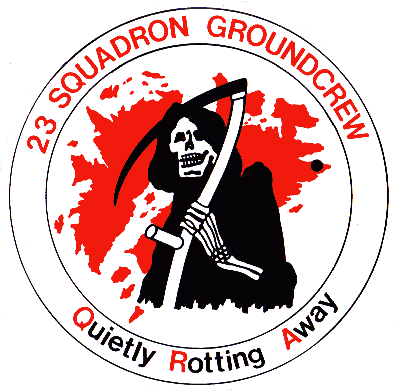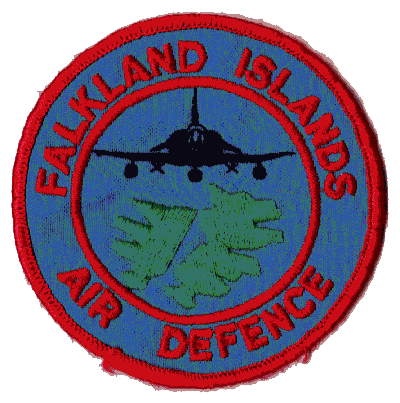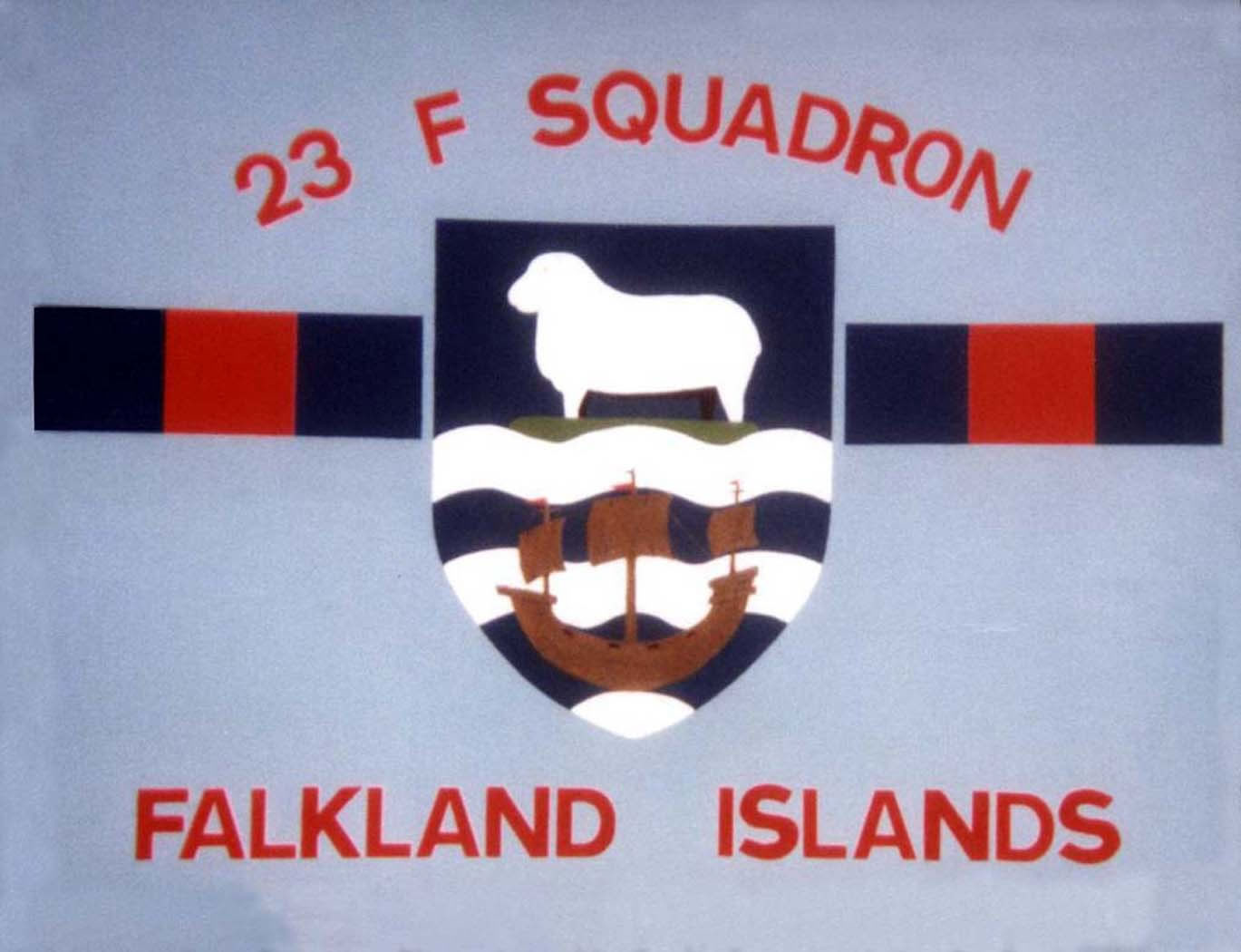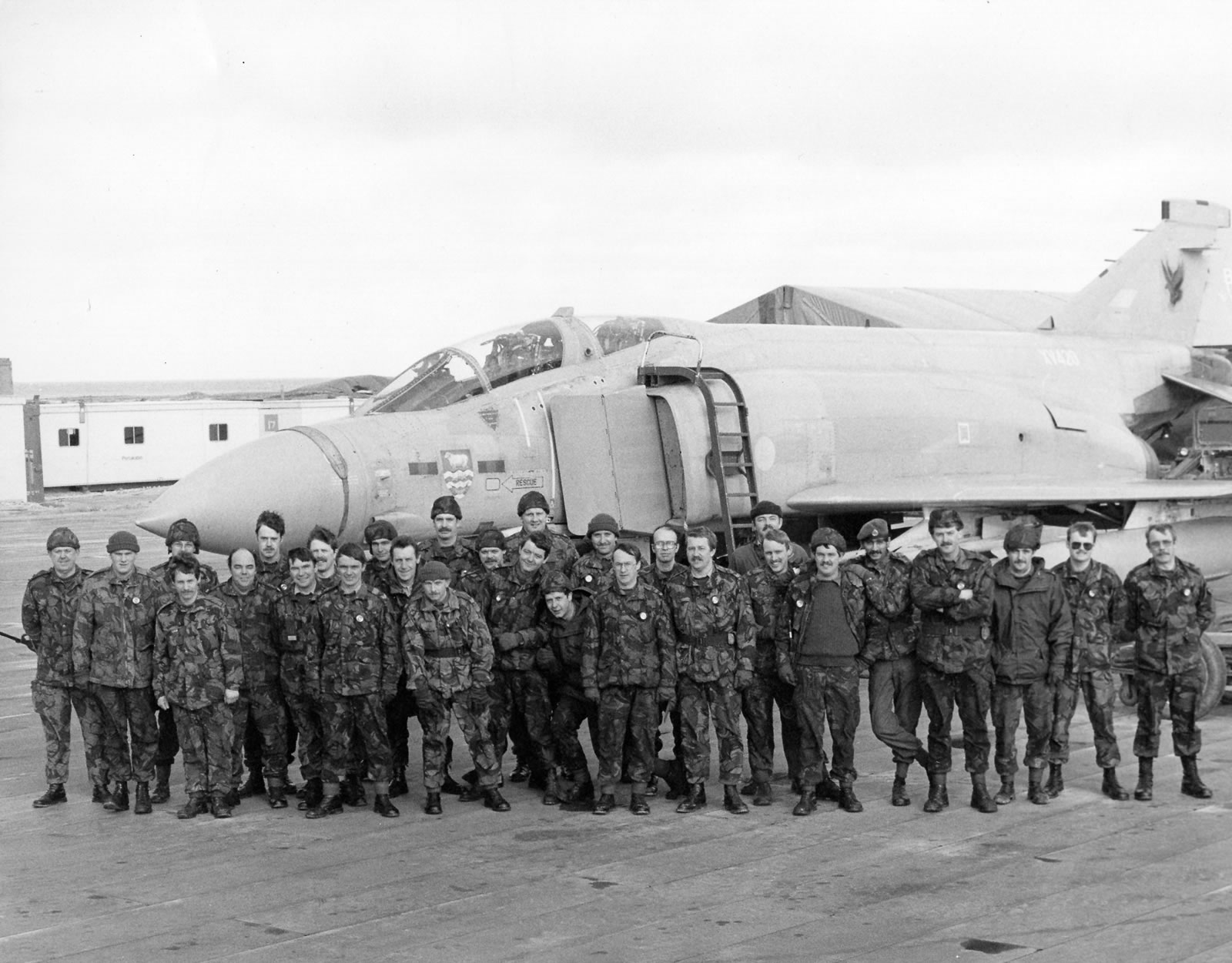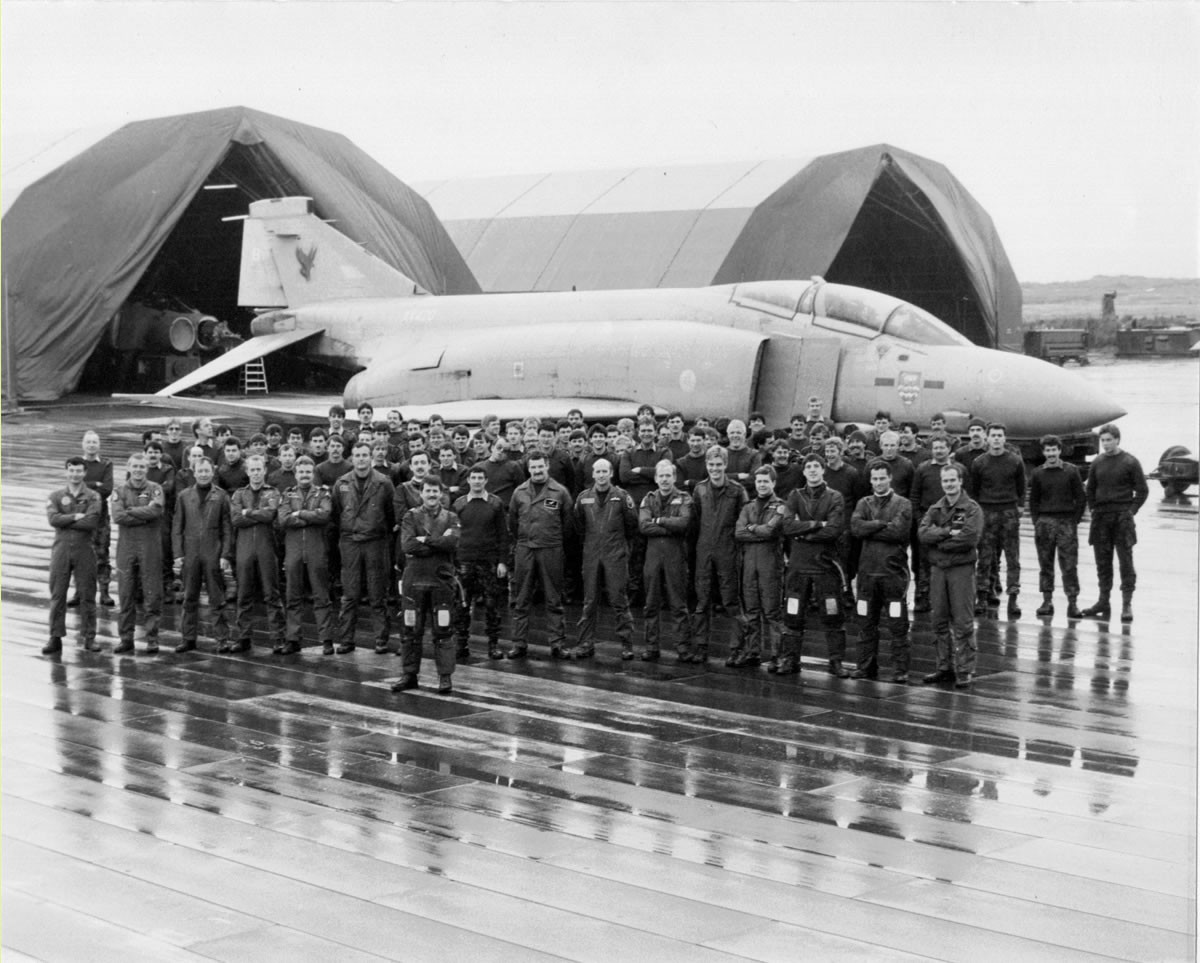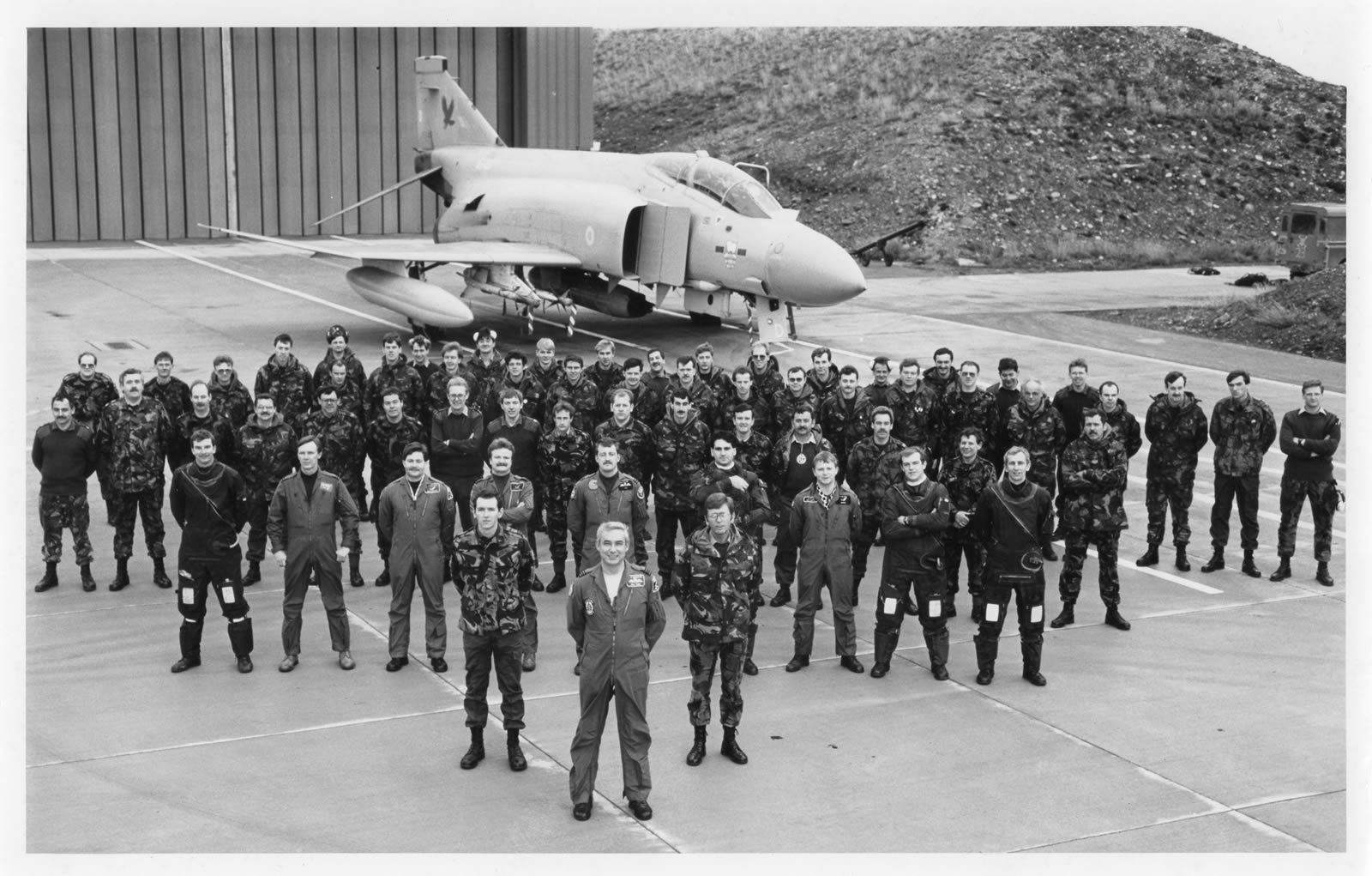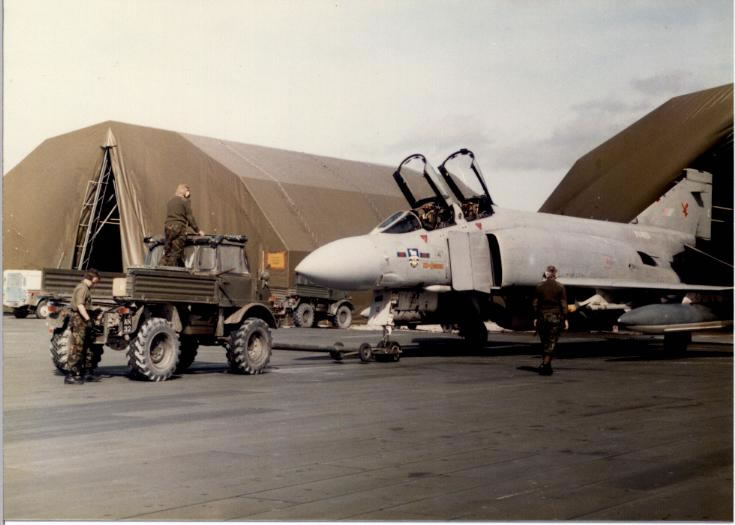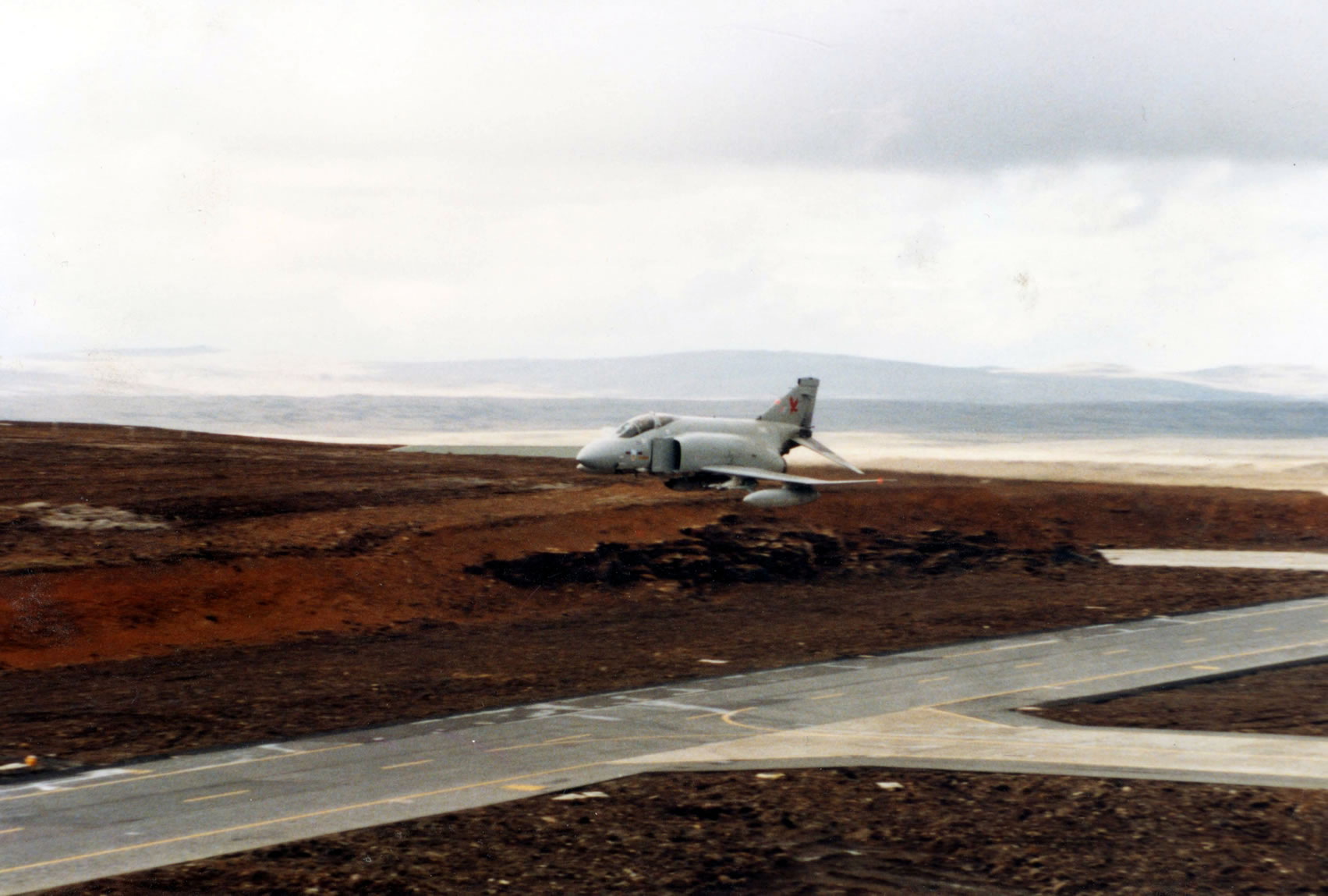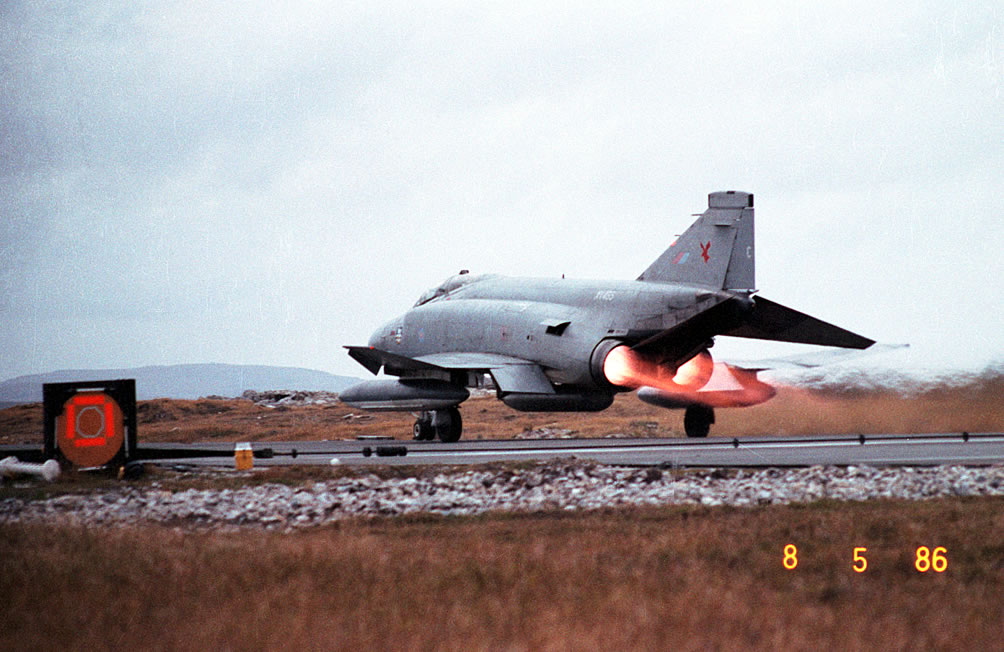23(F) Sqn (Falkland Isles)
RAF Stanley
30 Mar 1983 - 21 Apr 1986
RAF Mount Pleasant
21 Apr 1986 - 31 Oct 1988

No. 23 Squadron formed at Fort Grange, Gosport on 1 Sep 1915 under the command of one of the RAF's most experienced operational pilots - Captain Louis Strange. After a brief period attempting to counter German airship flights over London, the Squadron moved to France with its FE2Bs initially employed on escort duties. By early 1917, Spad single-seaters had arrived, and were being used on offensive patrols. By the end of the War, the Squadron had converted to Dolphins, and flew these until disbanded at the end of 1919.
On 1 July 1925, No. 23 Squadron reformed at Henlow with Snipes, but these were replaced shortly after with Gloster Gamecocks. In 1931, the Squadron was tasked with carrying out trials on the new Hawker Hart two-seaters, taking the production version, known as Demons, on strength in 1933. It wasn't until late 1938 that the squadron received its first monoplanes in the form of Blenheims, and these were used as night-fighters in the early days of World War II whilst based at Wittering. In 1941, Havocs replaced the Blenheims, and these were used with great success in the intruder role, until themselves replaced by the Mosquito in mid-1942. At the end of the year, the squadron moved to Malta in support of allied operations in the Mediterranean before returning to the UK in 1944.
In September 1945, the Squadron had disbanded, reforming a year later at Wittering with Mosquito night-fighters. By late 1953, Venom night fighters had joined the Squadron, before Javelin all-weather supersonic fighters replaced these in 1957. In 1964, the Lightning replaced the Javelin, and it was with this classic aircraft that the squadron continued until Phantoms were received in late 1975, this coinciding with a moved to Wattisham in Suffolk. After the Falklands War in 1982, the Squadron occupied Port Stanley airfield until reduced to a Flight of four aircraft in 1988, reforming at Leeming with Tornado F3s. Defence cuts following the end of the Cold War saw the unit disbanded in March 1994. No. 23 Squadron was again reformed, this time as part of the Waddington AEW Wing in 1996, sharing not only the aircraft with the already established No. 8 Squadron, but operational duties in Europe and the Gulf.
The Squadron was officially disbanded on 2 Oct 2009.

 No. 228 OCU
No. 228 OCU No 6 Sqn
No 6 Sqn No 54 Sqn
No 54 Sqn XLI Sqn
XLI Sqn II(AC) Sqn
II(AC) Sqn No 14 Sqn
No 14 Sqn No 17 Sqn
No 17 Sqn No 31 Sqn
No 31 Sqn No 64(R) Sqn
No 64(R) Sqn No 43(F) Sqn
No 43(F) Sqn No 111(F) Sqn
No 111(F) Sqn No 29(F) Sqn
No 29(F) Sqn No 23(F) Sqn
No 23(F) Sqn No 56(F) Sqn
No 56(F) Sqn No 74(F) Sqn
No 74(F) Sqn No 19(F) Sqn
No 19(F) Sqn No 92(East India) Sqn
No 92(East India) Sqn No 23(F) Sqn
No 23(F) Sqn 1435 Flt
1435 Flt RAF Coningsby
RAF Coningsby RAF Bruggan
RAF Bruggan RAF Laarbruch
RAF Laarbruch RAF Leuchars
RAF Leuchars RAF Wattisham
RAF Wattisham RAF Wildenrath
RAF Wildenrath RAF Stanley
RAF Stanley RAF Mount Pleasant
RAF Mount Pleasant



